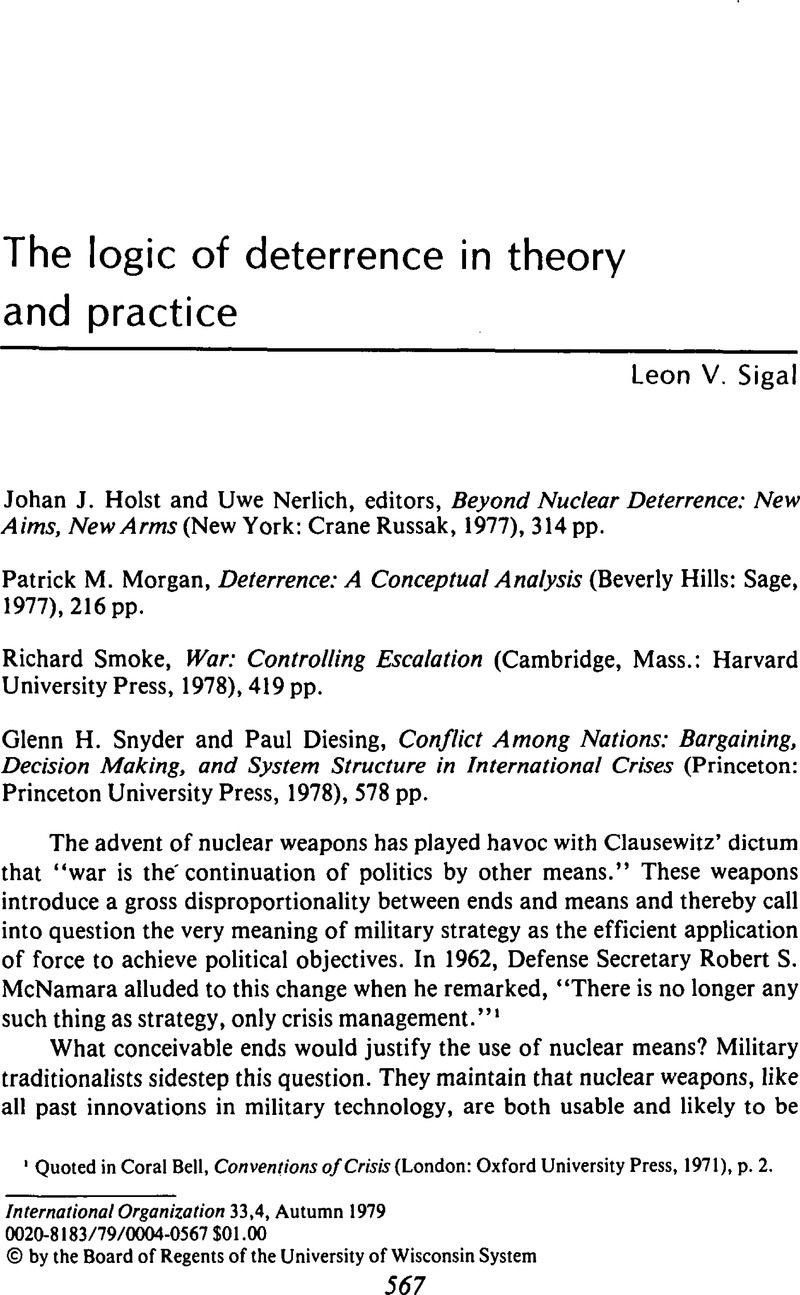Published online by Cambridge University Press: 22 May 2009

1 Quoted in Bell, Coral, Conventions of Crisis (London: Oxford University Press, 1971), p. 2Google Scholar.
2 Kahn, Herman, On Thermonuclear War (Princeton: Princeton University Press, 1961), p. 24Google Scholar.
3 I am indebted to Alexander George for clarifying this point.
4 George, Alexander L., Hall, David K., and Simons, William E., The Limits of Coercive Diplomacy (Boston: Little, Brown, 1971), pp. 228–44Google Scholar.
5 The authors elaborate a number of game structures which they distinguish according to payoff orderings. In the following matrix,

6 Quoted in Jenkins, Brian, The Unchangeable War (Santa Monica: RAND, 1973)Google Scholar.